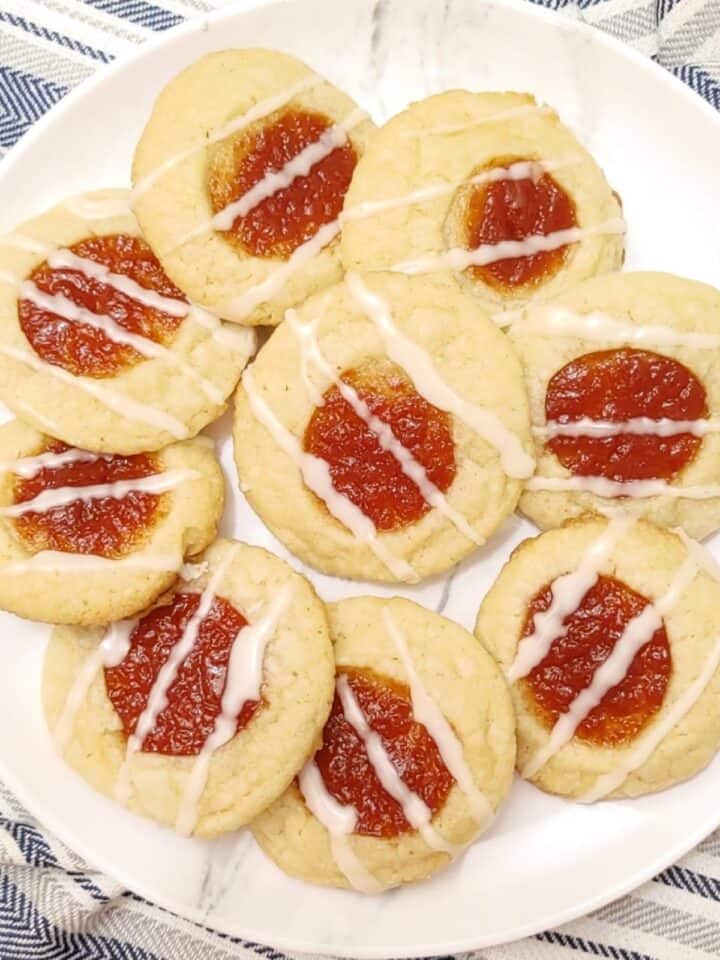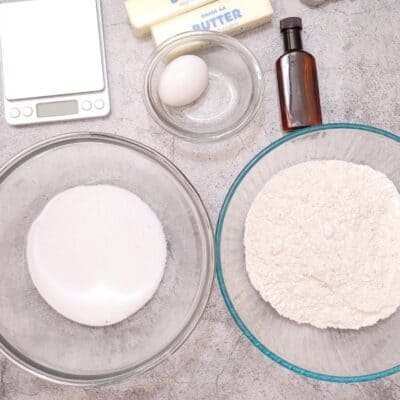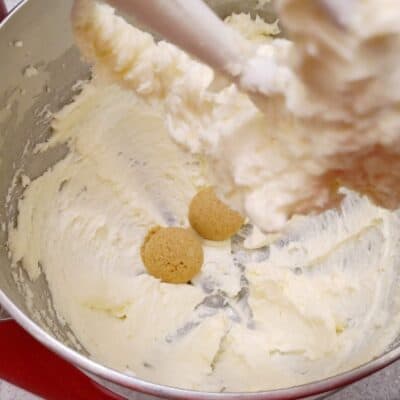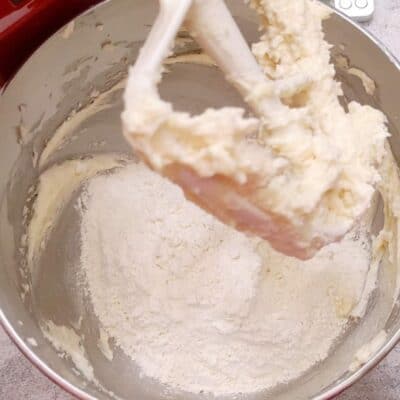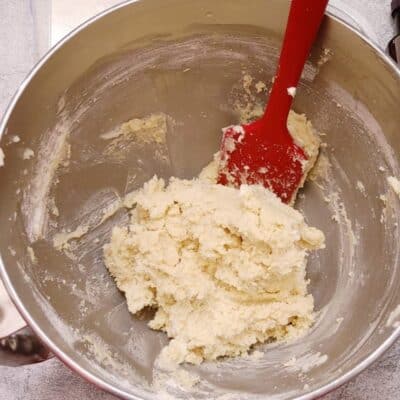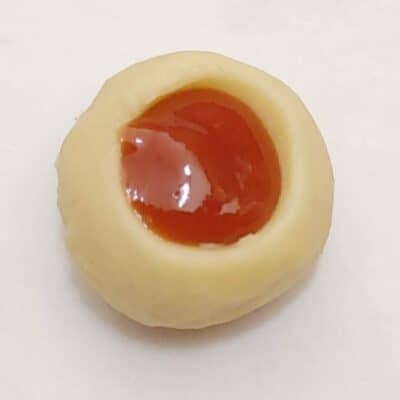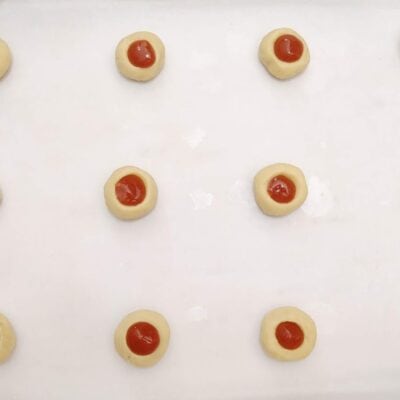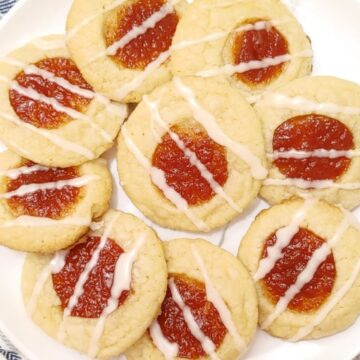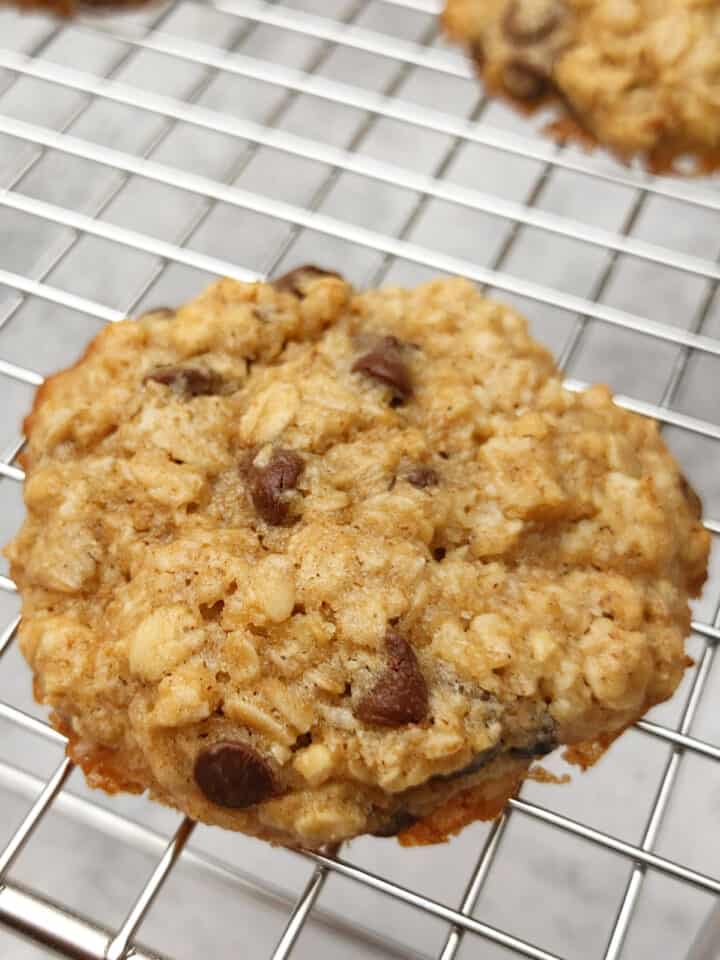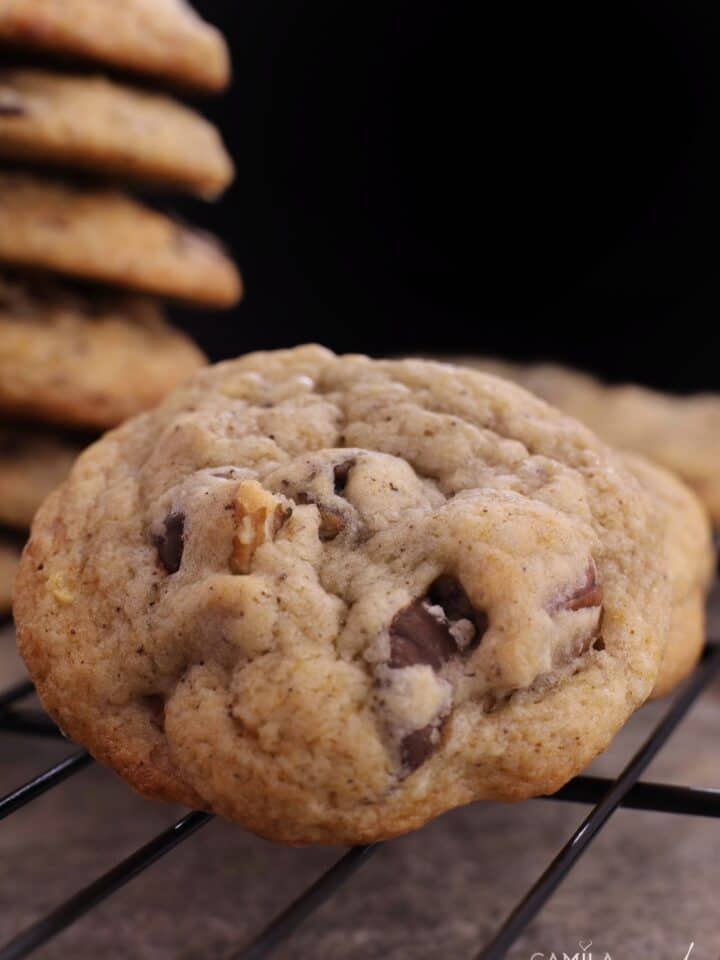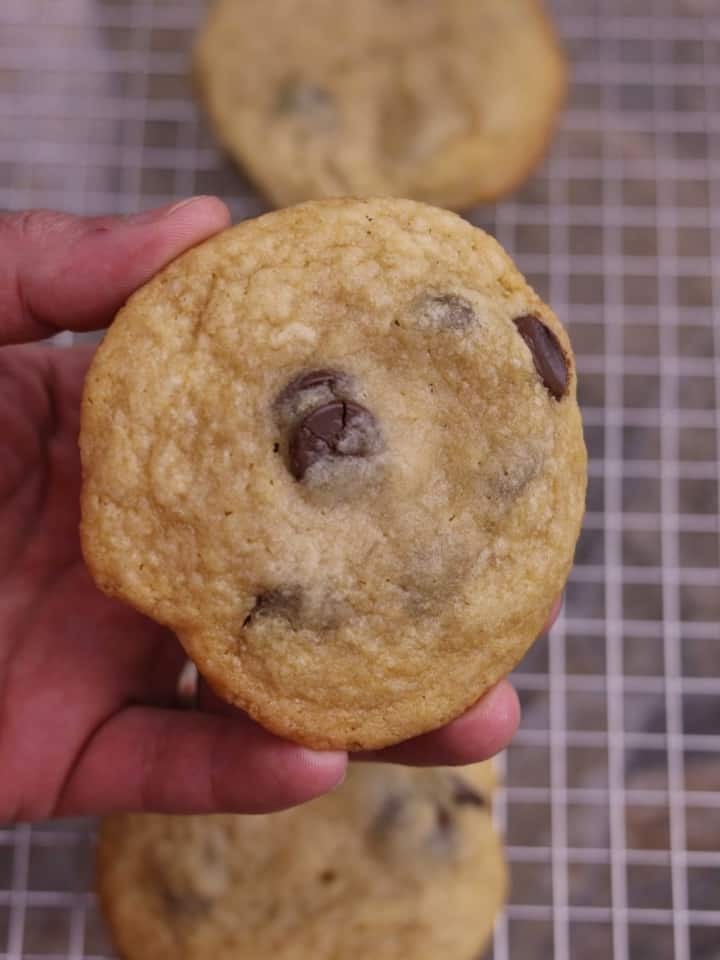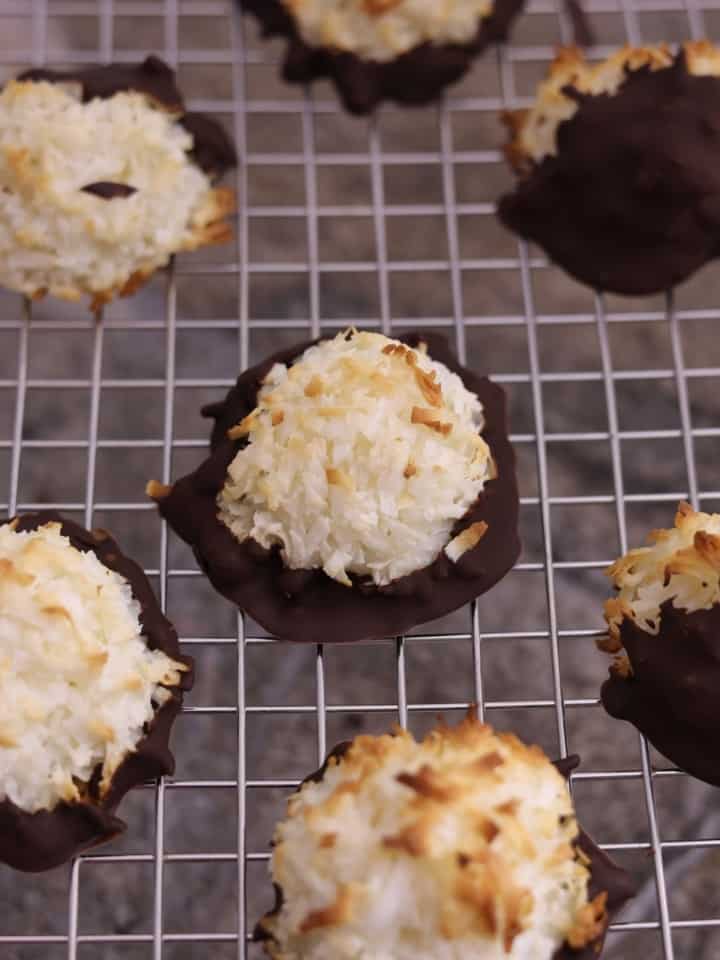This Paraguayan-inspired Guava thumbprint cookie is delicious for a few reasons. First, the raspberry Guava filling in the center is fruity and flavorful.
Second, the sugar cookie dough is buttery and rich. Finally, the cookies have a slight crunch from the vanilla glaze on the outside, making them irresistible.
 How to Make Guava Thumbprint Cookies
How to Make Guava Thumbprint Cookies
Note: The full instructions are provided in the recipe card below.
Sift the flour and baking powder in a medium bowl and set aside. (Alternatively, use 280g of self-raising flour in this recipe and leave out the baking powder and salt).
Using a hand or stand mixer with a paddle attachment in a large bowl, cream the butter, sugar, pure vanilla extract, zest, and salt quickly until creamy, about 3 minutes.
Switch the mixer to medium speed, add the eggs, one at a time, and beat until combined. Scrape down the sides and the bottom of the bowl as needed. Fold in the dry ingredients until just incorporated. Cover tightly and chill the cookie dough for at least 1 hour and up to 3 days.
Position racks in the upper and lower thirds of the oven and preheat to 350°F. Line 2 baking sheets with parchment paper; set aside. Once firm, roll the dough into 1-inch balls and arrange ½ inch apart on the prepared baking sheets; chill the cookies for at least 15 to 30 minutes in the freezer.
Bake cookies for 6 minutes, remove them from the oven, and use your thumb to press a slight indentation into the center of each cookie.
Fill each indentation with about a teaspoon of Guava Preserve and return to the oven. Continue baking until cookies are golden brown, about 10 to 24 minutes longer.
Allow to cool on the baking sheets for 5 minutes, then remove to a wire rack to cool completely before glazing. Store the Guava Thumbprint Cookies in an airtight container at room temperature for up to 3 days or in the refrigerator for up to a week.
How to Make Vanilla Glaze
Whisk the glaze ingredients together until smooth. Add more liquid to thin out or more confectioners’ sugar to thicken to your desired consistency. Drizzle over cooled Guava Thumbprint Cookies. Enjoy!
- Guava Bars
- Cornbread Muffins with Guava
- Cornbread Muffins with Guava
- Cornbread Bundt Cake
- Guava Preserves
- Guava Scones
Recipe
Easy Guava Thumbprint Cookies
Tools
Ingredients
- 270 g all-purpose flour
- 10 g baking powder
- 125 g unsalted butter , softened to room temperature
- 1 large egg , room temperature
- 1 egg yolk , room temperature
- 100 g granulated sugar
- 25 g light brown sugar
- 30 ml (2 tablespoons ) pure vanilla extract
- Zest from ½ of lemon , optional
- ¼ teaspoon kosher salt
- 200 g Guava Preserve or any flavor you like
For the Vanilla Glaze:
- 120 g confectioners’ sugar
- 15-30 ml heavy cream evaporated milk or milk
- 1 teaspoon pure vanilla extract
Instructions
- In a medium bowl, sift together the flour and baking powder and set aside. (Alternately, you can use 280g of self-raising flour in this recipe, and leave out the baking powder and salt).
- Using a hand mixer or stand mixer with a paddle attachment in a large bowl, cream the butter, sugar, pure vanilla extract, zest, and salt on high speed until creamy, about 3 minutes. Switch mixer to medium speed and add the eggs, one at a time and beat until combined.
- Scrape down the sides and the bottom of the bowl as needed. Fold in the dry ingredients until just incorporated. Cover tightly and chill the cookie dough for at least 1 hour and up to 3 days.
- Position racks in the upper and lower thirds of the oven and preheat to 350°F. Line 2 baking sheets with parchment paper; set aside.
- Once firm, roll the dough into 1-inch balls and arrange ½ inch apart on the prepared baking sheets; chill the cookies for at least 15 to 30 minutes in the freezer.
- Bake cookies for 6 minutes, remove them from the oven and use your thumb to press a slight indentation into the center of each cookie. Fill each indentation with about a teaspoon of Guava Preserve and return to the oven. Continue baking until cookies are golden brown, about 10 to 24 minutes longer.
- Allow to cool on the baking sheets for 5 minutes, then remove to a wire rack to cool completely before glazing. Store the Guava Thumbprint Cookies in an airtight container at room temperature for up to 3 days or in the refrigerator for up to a week.
Notes
- To store: Place them in an airtight container at room temperature for up to 5 days or in the refrigerator for up to a week.
- To reheat: Warm them in a low-temperature oven or toaster oven briefly until heated.
All nutritional information is based on third-party calculations and is only an estimate. Each recipe and nutritional value will vary depending on the brands you use, measuring methods, and portion sizes per household.

